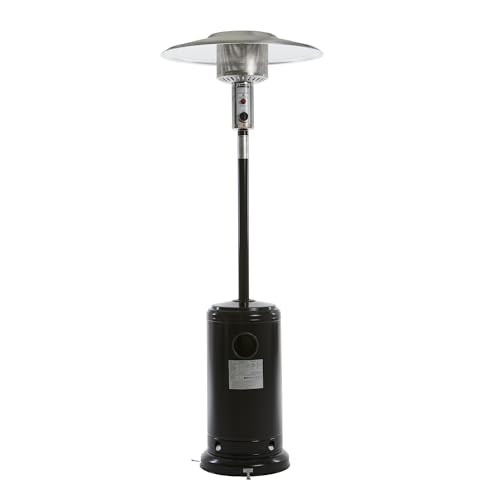The Essential Guide to Garden Heaters in the UK
As the nights attract and the seasonal chill starts to permeate into the air, garden spaces frequently get less attention. However, with the help of garden heaters, home and outdoor enthusiasts can extend their satisfaction of these areas well into the cooler months. In visit the next post , garden heaters have actually evolved into a necessary feature that adds heat, ambience, and performance to gardens. This post explores the numerous types of garden heaters readily available, their benefits and disadvantages, and practical pointers for choosing the very best alternative for your outdoor location.
Table of Contents
- Kinds Of Garden Heaters
- Gas Heaters
- Electric Heaters
- Wood-Burning Heaters
- Patio Umbrella Heaters
- Fire Pits
- Benefits and Disadvantages of Garden Heaters
- Selection Guide for Garden Heaters
- FAQs
- Conclusion
1. Kinds Of Garden Heaters
When selecting a garden heater, it is important to think about how efficiently it warms the space while also matching the general aesthetic of the garden. Below are the most common types of garden heaters readily available in the UK market.
Gas Heaters
Gas heaters are powered by propane or butane, providing a powerful source of heat that can warm a big area quickly. They are typically seen at outdoor dining establishments and coffee shops due to the fact that of their efficiency.
Pros:
- High heat output
- Portability
- Appropriate for large spaces
Cons:
- Requires routine refilling of gas
- Some designs can be expensive
Electric Heaters
Electric heaters are getting appeal in residential gardens due to their convenience and ease of use. Available in various styles, they can be installed to a wall, set up in a ceiling space, or placed as freestanding units.
Pros:
- Easy to operate
- No requirement for gas refills
- Available in diverse styles
Cons:
- Dependent on electrical power supply
- May have greater running costs compared to gas
Wood-Burning Heaters
Wood-burning heaters and stoves use a rustic appeal, ideal for producing a relaxing environment in the garden. They can work as barbecues and heating sources, making them multi-functional.
Pros:
- Provides a standard visual
- Can likewise be utilized for cooking
- Eco-friendly if using sustainable wood
Cons:
- Requires more upkeep
- May produce smoke and ash
Patio Umbrella Heaters
Patio umbrella heaters are an excellent alternative for those with outdoor dining sets. These heaters are normally created to fit underneath a patio umbrella, offering warmth to restaurants without obstructing the view.
Pros:
- Compact and space-saving
- Easy to save when not in usage
Cons:
- Limited heating radius
- Less powerful compared to other designs
Fire Pits
Fire pits have become staples in lots of UK gardens, working as both a heat source and a style feature. Offered in different shapes and materials, they produce a social hub for gatherings.
Pros:
- Provides both heat and atmosphere
- Suitable for social gatherings
Cons:
- Requires guidance
- Not suitable for small spaces
2. Advantages and Disadvantages of Garden Heaters
Choosing the ideal garden heater includes weighing the advantages and drawbacks associated with each type.
| Type | Benefits | Downsides |
|---|---|---|
| Gas Heaters | Quick heat, portable | Routine gas refills, expense |
| Electric Heaters | Hassle-free, varied designs | Dependent on electricity, running expenses |
| Wood-Burning Heaters | Rustic appeal, multi-functional | Upkeep needed, can produce smoke |
| Patio Umbrella Heaters | Compact, simple to keep | Restricted heating radius |
| Fire Pits | Warmth with environment, celebration | Requires supervision, space usage |
3. Choice Guide for Garden Heaters
Choosing the right garden heater includes considering numerous aspects. Here are ideas to remember:
- Space: Measure your outdoor location to determine the size and output of the heater required.
- Budget plan: Set your budget plan early, considering both the preliminary investment and continuous running costs.
- Design: Choose a heater that matches your garden's style and atmosphere.
- Mobility: Consider whether you need a fixed unit or one that can be quickly moved and stored.
- Environment: Assess if you desire an environmentally friendly option like a wood-burning heater or if electrical or gas will suit your requirements more successfully.
4. Frequently asked questions
Q: How much heat does a garden heater produce?A: Heat output differs by model, typically varying from 5 to 15 kW. Bigger spaces may require heaters with higher outputs.
Q: Are electrical heaters safe to utilize outdoors?A: Yes, but ensure they are particularly designed for outdoor usage to withstand the elements and prevent accidents.
Q: Can garden heaters be used during the rain?A: While some heaters are water resistant or water-resistant, utilizing any electrical heater in a rainstorm is not encouraged. Gas heaters might be more resistant.
Q: Do I need an authorization for a wood-burning heater?A: In some areas, wood-burning ranges might need an authorization or must comply with particular regulations. Constantly examine local laws.
Q: What upkeep do garden heaters need?A: Maintenance varies by type; typically, examining the gas supply, cleaning up fire pits, and making sure electric units are in good working order is advised.
As the UK garden season progresses beyond summer season, the addition of a garden heater can change an outdoor space into a year-round sanctuary. By understanding the variety of heaters available, their pros and cons, and personalizing them to fit one's requirements, homeowners can delight in larger-than-life events under the stars, indulging in heat and environment. The option of garden heater not only affects convenience however likewise raises the design of the garden, allowing individuals to take pleasure in the great outdoors longer into the chillier months.

